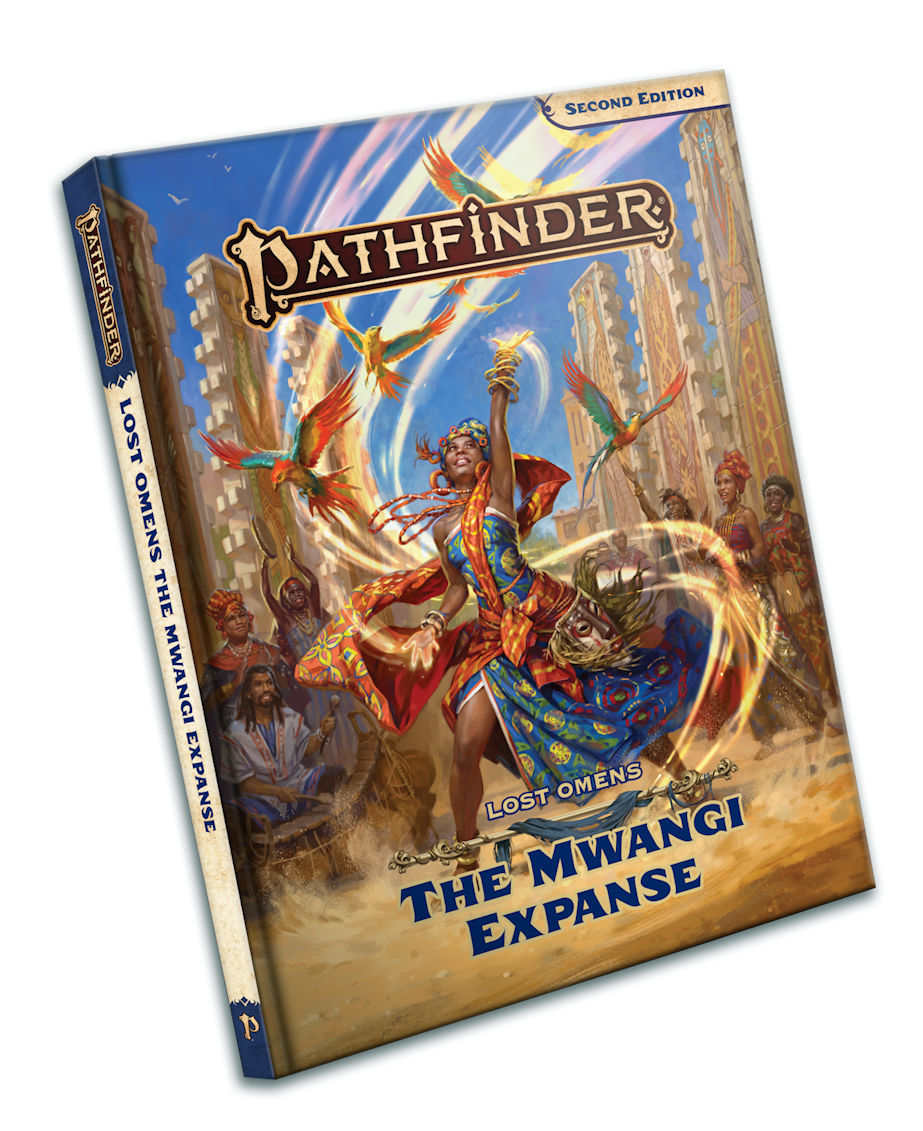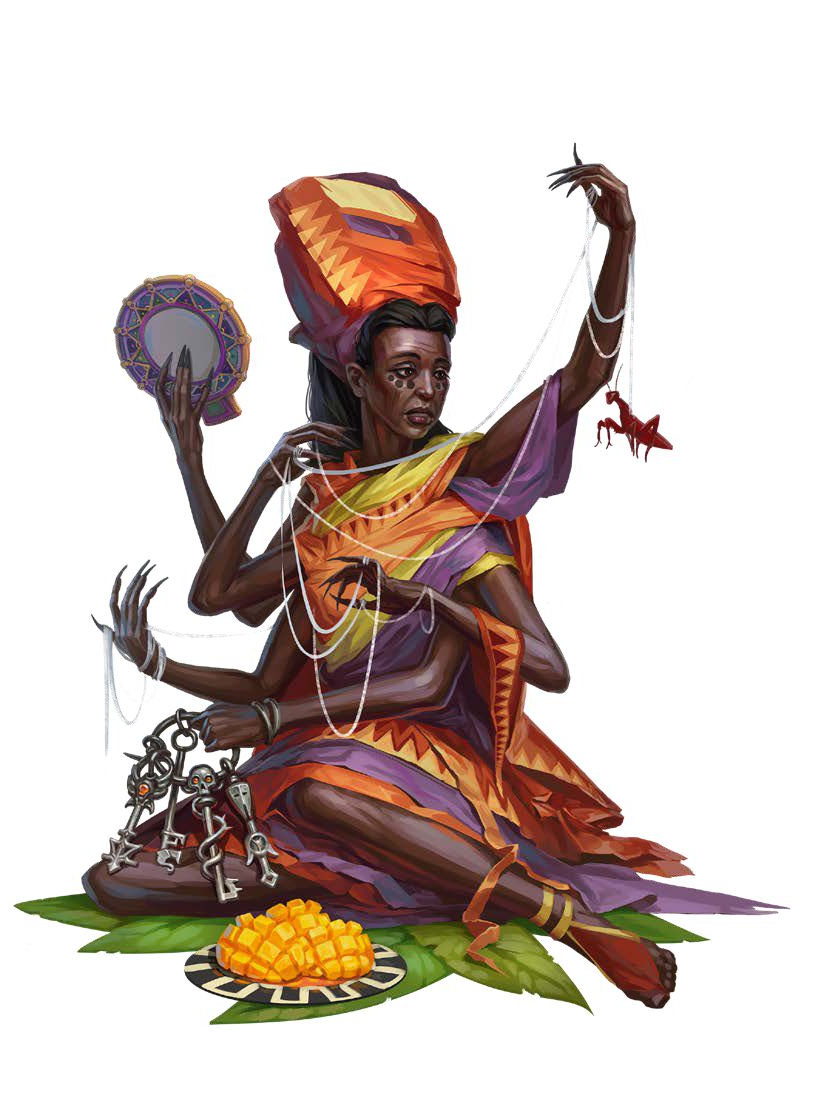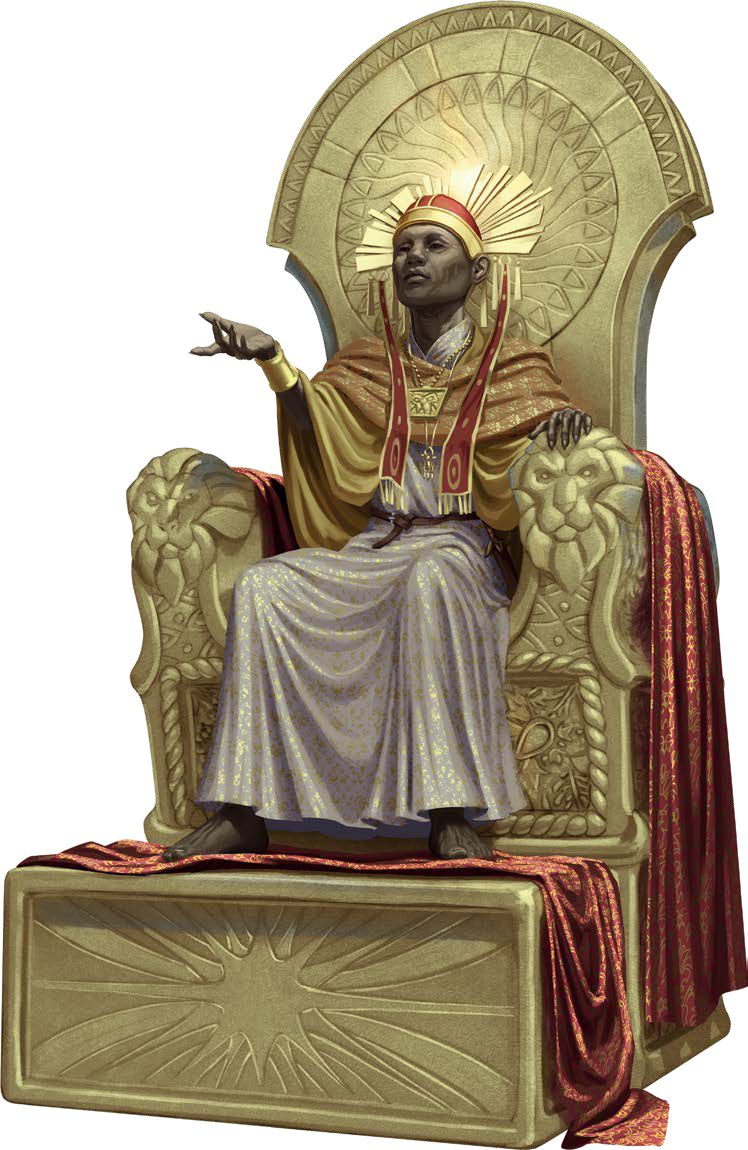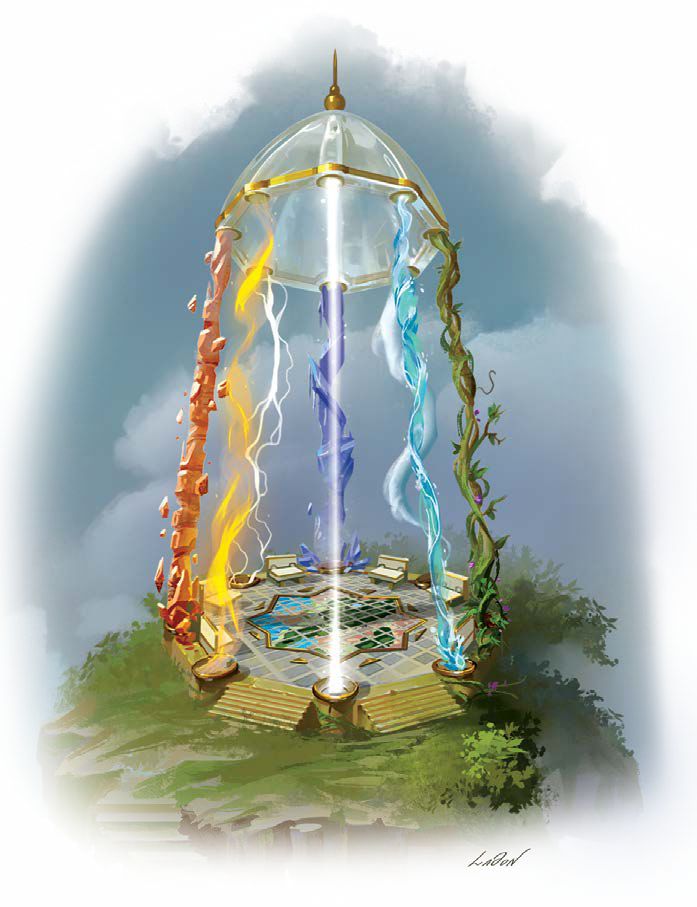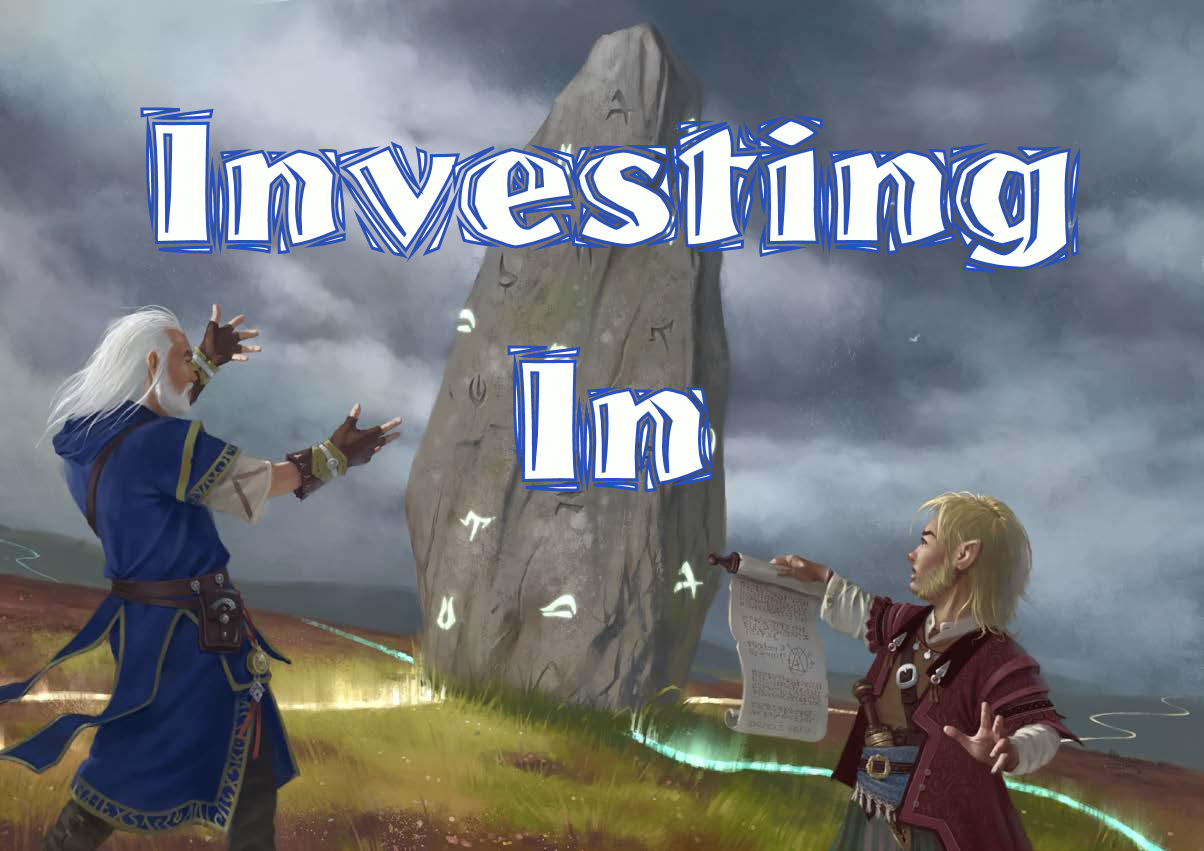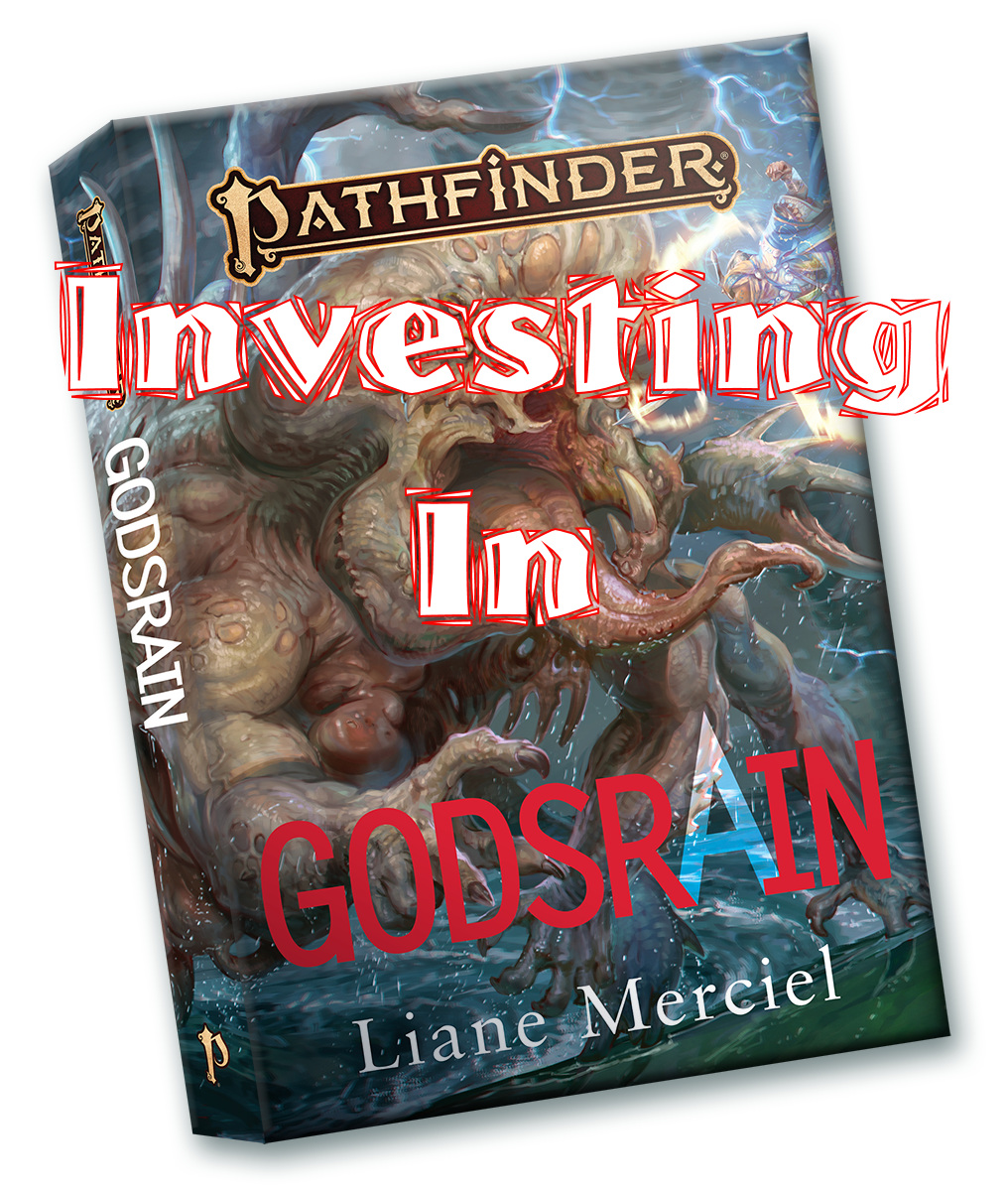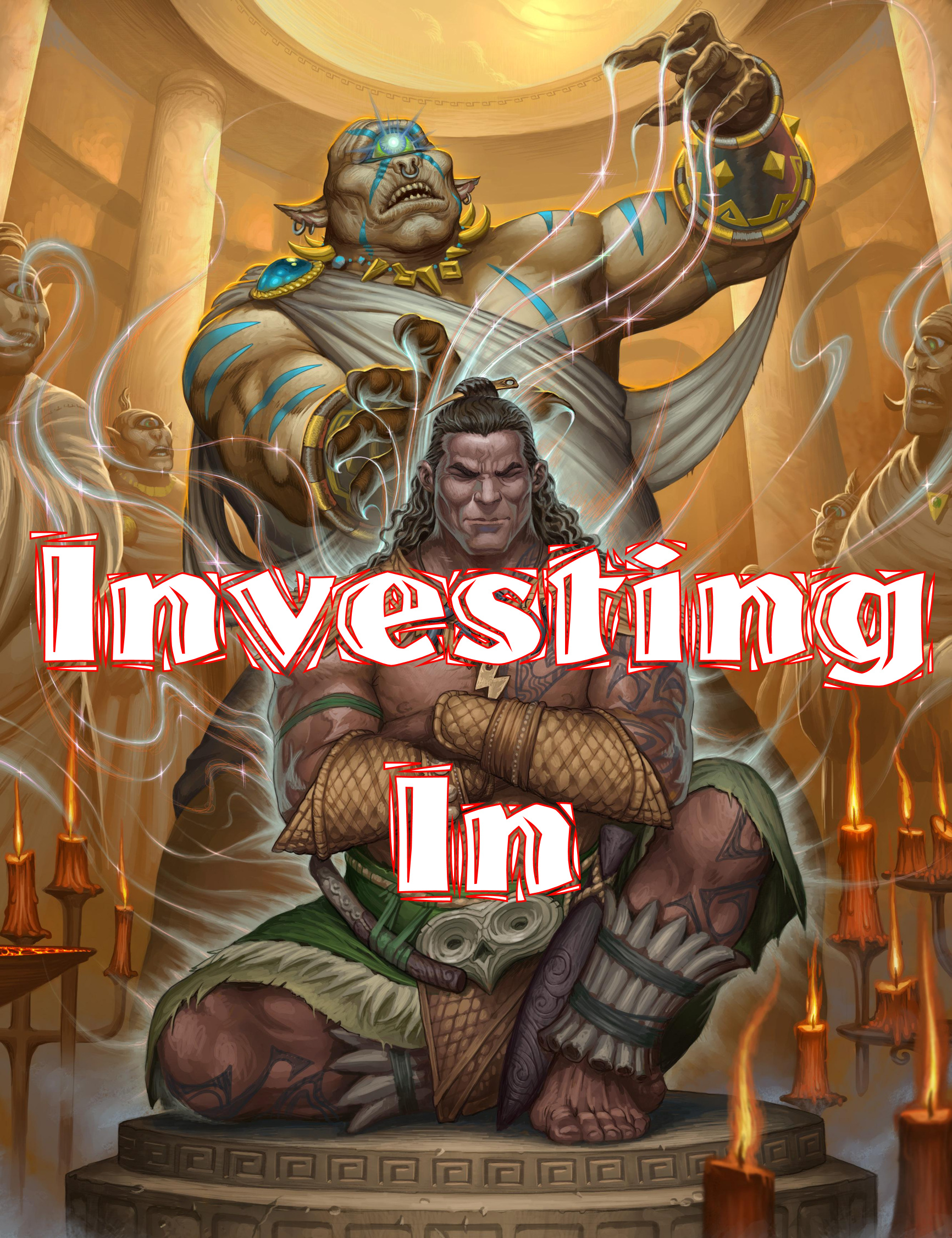“The Mwangi Expanse and its people, its places, its flora, fauna, and land are largely not new. People have thrived in this space for eons before your adventuring party will. They will continue to after. As creators, players, and Game Masters, we visit someone’s home, not simply a backdrop. The experiences that player characters have and non-player characters express in this part of the world, like any other, will almost certainly be strange, but what is new to us outside of the game has been long a part of Golarion in the fiction. The Mwangi Expanse has always been home to someone and we—the people outside of Golarion’s fiction—are the aliens getting to know the place together, like anywhere else in this world. Treat the homes of others well, even when those other people are your own characters. The fictions we paint in their spaces reflect and pull from real people and places, and your exotic is someone else’s existence.”1
Exciting, Not Exotic
My friends, fine folks, Pathfinders, and all those who gather here I am so thrilled to have The Mwangi Expanse in hand. Eleanor Ferron and Luis Loza have put together an amazing resource for the Lost Omens line! I’ve been thrilled by this book’s announcement for so long, not only because it builds on the lore and world-building of the Age of Lost Omens (yay!) but also because it details one of the areas of Golarion we haven’t gotten nearly enough detail on until now! As the opening paragraph – yes, pulled right from the book’s opening welcome – notes this is not a new place. It has thrived, survived, and helped the people of Golarion for centuries. Marvel but do not gawk for this is a land rich with history, culture, exploration, magic, and inspiration. I greatly appreciate whoever wrote this Exciting, Not Exciting call out and I had to reference it here. I am a white cis male of privilege and much like other parts of D&D, Pathfinder, and other roleplaying games inspired by real world places, cultures, and history (much in a medieval European vein) this book also has roots and symbolism drawn from reality. Look at that last sentence again.
The fictions we paint in their spaces reflect and pull from real people and places, and your exotic is someone else’s existence.
Be excited and celebrate with me, for those who can see themselves or a sliver of their culture, their history utilized in media, in print, let alone a game deserve this and so much more. I still think back to being excited to see a gay couple in Rise of the Runelords (Sir Jasper <3 Cyrdak). Representation matters, and so does respectful reflection of it. Please remember that as you share, discuss, and utilize the material presented in The Mwangi Expanse. Not only are these authors and artists contributing their creativity; it’s a myriad of people sharing their culture, history, and experiences with us.
The People and Their Culture
When planning Ev’etaewayr for Valiant, I knew I wanted him to have a rich background that brought some diversity to his ancestry and history as well as a marriage of the parts of Golarion we knew (Avistan, Garund) and that which we’d be exploring: Arcadia. I’ve new information now to help with my ne’er-do-well wizard. I chose Ev’s father to be Alijae, an elf of the Mwangi, who taught Ev of magic and of Grandmother Spider. She has a lovely feature in the Religion chapter as she is also known as Nana Anadi as the Anadi ancestry is detailed within as well. These spider-folk can transform into a humanoid shape and have lived in partial secrecy out of the persecution and fear of others. The history of their practices and involvement in the Magaambya, the ancient school of magic present in the city of Nantambu, are highlighted in the History chapter during the Age of Anguish. I’ll touch on Nantambu and the Magaambya, but I wanted to touch back on the Anadi and Grandmother Spider as they have clear influences with Spider Grandmother of the Hopi and other native american tribes and also Anansi, a trickster spirit or god of African and Caribbean background. This is just one example of the cultural influences used to inspire the Mwangi Expanse’s culture.
One of the PaizoCon Online teases from the Mwangi Expanse was the Conrasu, a rare ancestry that while they are a plant, they have more to do with cosmic forces and perhaps Aeons. Their plant forms are like exoskeletons to house their energy and that connection to Aeons is even better felt with the ability to call upon the knowledge of Axis as one of the heritage options. Eventually my Expedition Coalition game is going to bring the players to the Mwangi and I think interacting with these spirits from beyond who have constructed bodies will be of great interest. They give further opportunity to players who might want something closer to nature than an Android, yet provide a different perspective than the other humanoids of Golarion. Counter to this irregular ancestry is the uncommon Gnoll, a useful one considering the prevalence of Gnolls across Golarion. It’s good to see them presented with a full write-up, a detail on society and their growth as we’ve gotten Goblin, Hobgoblin, Orc, and of course Kobolds.
To speak more of the culture and religion of the peoples of the Mwangi Expanse, the Religion chapter offers a number of other deities besides Grandmother Spider. The lawful and good Adanye, mentor to catfolk, the god of all things huge Balumbdar, Lubaiko of bad luck and mischievous intent (and wildfire), and Mazludeh the serpent who is an elevated empyreal lord of knowledge, cities, and family. I find it interesting that Mazludeh is sometimes depicted as a woman with serpents for hair. She may have been a worshipped entity before humanity, favored by serpent or lizardfolk, and I’m wondering if she could bring a balance (part of her portfolio) to other sometimes feared people much like Grandmother Spider’s stories and worship has for the Anadi. But it’s one god in particular that draws my attention, especially with the detail presented of the city of Mzali, and that is Walkena.
Exploring These Lands
You want to get lost, on purpose exploring the Mwangi Expanse. However, I’d be careful venturing into Mzali. The God-King Walkena has been highlighted before including the Lost Omens World Guide where Mzali had a small write-up and of course Lost Omens Legends, where Sihar – leader of the Bright Lions who run counter to what this undead Walkena peaches and demands. Allegedly the living Walkena knew passion, but this God-King who dwells among mortals does not. The Bright Lions are active in the black market and shadows of Mzali, warmed by the love of the lion-headed goddess Tlehar and other sun gods, and I’m glad they are. With all the detail provided up to this point and now the full deific write-up for Walkena, I’m concerned for the people of Mzali and the Mwangi Expanse overall. Gods and Magic gave us the core details in the Other Gods listing, but now we’ve got details for cleric spell options, the abilities for casting the Avatar spell, and just a bit more about the edicts Walkena demands which is basically don’t consort with non-Mwangi and obey all his orders. Walkena reminds me of the Aztec sun and war god Huītzilōpōchtli as he had those that died continue to serve him and allegedly required human sacrifice. If Walkena has concerns for the nation of Vidrian – freed from Chelish control (and I mean, I can totally understand not liking the Chelish) – then it’s possible he won’t be so compassionate (see earlier concern at his loss for compassion) for those that dwell there. It’s why the Bright Lions still operate in secret in Mzali. The Life in Mzali write-up offers a very fearful, restricted life for a people that know a larger world exists beyond their borders. With so much of the Lost Omens line building up information on Walkena and Mzali, there is a central conflict here that can be easily explored by you, your players. And I certainly will! Maybe we will soon, though I’m not sure what’s on the path ahead…
The Strength of Thousands adventure path will focus on the Magaambya, the eldest school of magic in the world based in the beautiful and peaceful city of Nantambu. Not only does the Geography chapter off a map of ever city it details, but there’s the settlement write-up we’d expect with some breathtaking art. The entire book is filled with amazing and beautiful art (thank you!). The Governing Council is detailed, which will be very useful for those running the path or anyone visiting the city. More detail is given on the school and there’s details in the History chapter to support Old-Mage Jatembe’s work with the Ten Magic Warriors. I’m a particular fan of the Circle (depicted below) they built as they began the school. There’s plenty more to see in Nantambu and the exploring section offers such things as the Carnivorous Gardens and the Dance Courts. The people are the joy of this city though and their craftsmanship, with a bit of magic touching all things. There’s a pet shop of exotic offerings – Oba’s Wondrous Creatures – for there is high demand for popular pets, though a student of Magaambya might not find Oba so supportive of their studies. It’s but one facet of a diverse city where opinion and thought are explored in a larger, diverse, and thriving nation.
There’s much to learn, see, and celebrate of the Mwangi Expanse. More people, places, religion, and history await you as well as a Bestiary of new creatures including the dangerous Aigamuxa or the beautiful Solar Ibis. A special thank you to all the contributing authors and artists who’ve shared with us a part of their existence and culture. I highly suggest you invest in learning of the exciting, not exotic by picking it up and you’ll see for yourself how the Mwangi Expanse truly paints a wondrous, vibrant land for its people in the Age of Lost Omens and the world of Golarion!
Investing In:
I wasn’t quite sure what to name my article series when I first started but the idea of showcasing or discussing things that make me excited, that I find new and interesting, or maybe I’m otherwise passionate about seemed to fit with the idea of Investing In something like the Pathfinder 2E mechanic. To use some magic items you have to give that little bit of yourself, which helps make these things even better. I like the metaphor of the community growing and being strengthened in the same way!
I also want to hear what you’re Investing In! Leave me a comment below about what games, modules, systems, products, people, live streams, etc you enjoy! You can also hit me up on social media as silentinfinity. I want to hear what excites you and what you’re passionate about. There’s so much wonderful content, people, groups (I could go on) in this community of ours that the more we invest in and share, the better it becomes!
Sources
Banner – The Mwangi Expanse cover art, Paizo, by Ekaterina Burmak
- Exciting, Not Exotic excerpt, Reclaiming the Expanse, The Mwangi Expanse, Paizo
- Reclaiming the Expanse chapter art, The Mwangi Expanse, Paizo
- Grandmother Spider, Religion, The Mwangi Expanse, Paizo
- Walkena from Mzali, Geography, The Mwangi Expanse, Paizo
- The Circle from Nantambu, Geography, The Mwangi Expanse, Paizo

